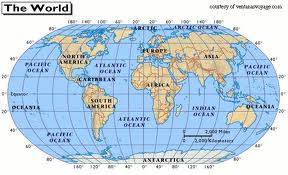“The most beautiful
experience we can have is the Mysterious.
Whoever does not know it can no longer wonder, no longer marvel, is as
good as dead, and his eyes are dimmed.”
- Albert Einstein
History bobs around in
the most chaotic and unpredictable fashion. No one quite knows where roads may lead or for that matter
where they have begun.
Sometime during the 15th Century history took a
wild swerving detour that lasted some 400 years and established the world of today. During that time a
confluence of technology, stable political entities, and an emerging middle
class eager to make money encouraged a few Europeans to brave the oceans in
search of opportunity. As the
European began to emerge from the stifling times of the Middle Ages in which
much of the globe seemed as remote as the stars, he found a world populated
with the incredulous. New fauna,
new flora, new rocks, new peoples, new religions, new stories of wealth and
power were found at every turn.
This ‘newly discovered’ world became the fashion of the rich and the
intellectual. Everything under the
sun found it’s way back onto European soil, and so began a resurgent fascination with the natural world.
(It stands to notes that these explorations also brought to Europe a wide range of new foods: the potato, the tomato, the chili pepper, maize from the new world and abundant spices for the far East, thus setting the stage for our modern culinary arts. That is another story.)
(It stands to notes that these explorations also brought to Europe a wide range of new foods: the potato, the tomato, the chili pepper, maize from the new world and abundant spices for the far East, thus setting the stage for our modern culinary arts. That is another story.)
During the 16th
and 17th Centuries collections of natural history became as common
as collections of art or religious artifacts and often these were
one and the same and often a shard of the Holy Cross would be kept beside a
stuffed Pelican. Exhibits boasted
phosphorescent feathers, shrunken heads, rhinoceros horns, fetal skeletons, a
chain made of monkey teeth, elephant ears (not the edible variety), a unicorn’s horn, two-tailed lizards, a two headed cat, feathers from the
crown of a South American queen, and on and on and on the list unfolds. Imagine it, and it was collected
somewhere. These collections
became known as Cabinets of Wonder or Cabinets of Curiosities or Art Cabinets or Wunderkammen. Take your pick.
Amassed for all sorts of
reasons: economic benefit, personal prestige, and intellectual stimulation,
they existed in the centers of the European power and money: Paris, Vienna, Oxford, Basel, etc. Essentially, any man worth his salt
would want a Cabinet that included the rarities of manmade ingenuity
alongside Nature’s bountiful wonders and God’s miracles. They were after all one and the same.
Held in the hands of the
aristocracy and merchants class, the Cabinets became the basis for today’s
great museums when in the 19th Century it became vogue to clean out
one’s mansions and turn these cluttered attics over to the public for cataloguing.
Those are the facts as we
know them. But, what, we must ask,
actually happened that changed the world into our Modern one? The
answer is ‘Wonder’. Discovery blew
open the doors of the mind, and the immense variety of the world literally
stunned the European sensibilities right out of the Middle Ages and into the
Renaissance. All the old
assumptions of intellectual thought were challenged. Religious and
political authority were simultaneously shaken by the new attitudes of the time. Take the Reformation. A wholesale reorganization of the European world was in progress.
These
Cabinets stand at that intersection in the history of the world. On the one side we have the world
classified through the eyes of religion and magic, a world of humors and
ethers, of anthropomorphic gods and one god in a kingdom of gold looking down. On the other side we
have a world that develops over eons according to a series of natural laws and a
systematic classification through observation called science. On this side of the intersection we’ve drawn hard
lines and labeled boxes, laid a grid over the world, and established nomenclature that we can all agree on as right and wrong, or
at least plant, mineral, and animal. On this side, we have classified the world.
But let's pause in our progress and walk back into one of these Cabinets. Imagine ourselves awash in
the whimsy of creation, awestruck at the complexity with no single understanding of it all. Each item in the Cabinet has multiple stories to tell. And these stories draw lines that branch out in every direction linking one part of the world to another in a new fashion. This web of connections between disparate worlds, a carving of the Crucifixion beside a model of the Tower of London beside a mounted sample of coral, instills the Cabinets with the otherworld and
keeps it timeless. Something raw and young inhabits the Cabinets of Curiosities.
We still live with these Cabinets. They hide in unexpected places right under our nose.
We still live with these Cabinets. They hide in unexpected places right under our nose.
Open
the door and enter our Cabinet.





